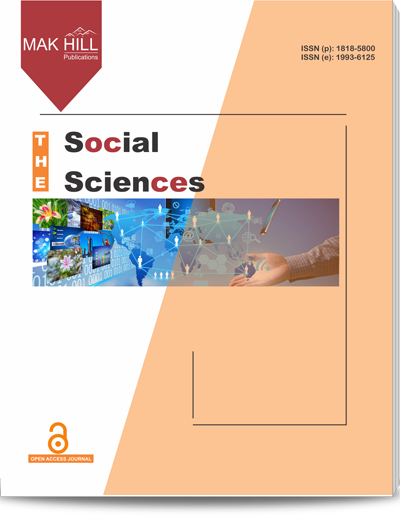
The Social Sciences
ISSN: Online 1993-6125ISSN: Print 1818-5800
109
Views
0
Downloads
Preserving Human Development Towards a Peaceful Community: General Observation According to Quran Perspective
Shuhairimi Abdullah, Edzham Armin Abdul Rahim, Mohd Kasturi, Nor Abd Aziz, Noor Salwani Hussin, Abdul Jalil Ramli and Jamsari Jamaluddin
Page: 973-978 | Received 21 Sep 2022, Published online: 21 Sep 2022
Full Text Reference XML File PDF File
Abstract
In driving towards humanity development that’s centered on peace community it is important to have a religion based framework as the main ingredient. Islam as the ‘Deen’ and Allah as the creator, the ever living is the most complete way of life without a stint of imperfection. The teaching is divine and close to the nature of human if definitely an assurance of guideline to develop a holistic peace community. The world has seen the historical greatness of Islam and the community in developing a successful ancient civilization which is highly based on “tawhidic paradigm”. In reality, a society that is solely brought up with material aspect without considering spiritual aspect will have a depreciation of moral values thus indirectly will negatively affect the development of human in general. This research study used literature review method to look at the perception of Quran and scholars regarding human development. All the data gathered were then analyzed using content analysis. It is a fact that Al Quran is the main instrument in dictating and framing a peace community. Quran is a scripture that explain about the true teachings of Islam which disseminated through our beloved Prophet Muhammad PBUH. Relatively, the content of Quran have stated and touch on matters related to human in developing a peace community as well as other needs. The content of Quran has also become the guideline to make decision that will lead to happiness be it now or during the hereafter.
How to cite this article:
Shuhairimi Abdullah, Edzham Armin Abdul Rahim, Mohd Kasturi, Nor Abd Aziz, Noor Salwani Hussin, Abdul Jalil Ramli and Jamsari Jamaluddin. Preserving Human Development Towards a Peaceful Community: General Observation According to Quran Perspective.
DOI: https://doi.org/10.36478/sscience.2016.973.978
URL: https://www.makhillpublications.co/view-article/1818-5800/sscience.2016.973.978